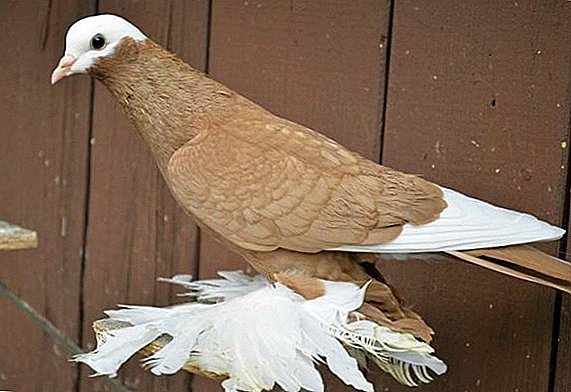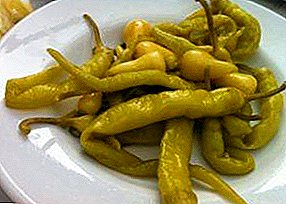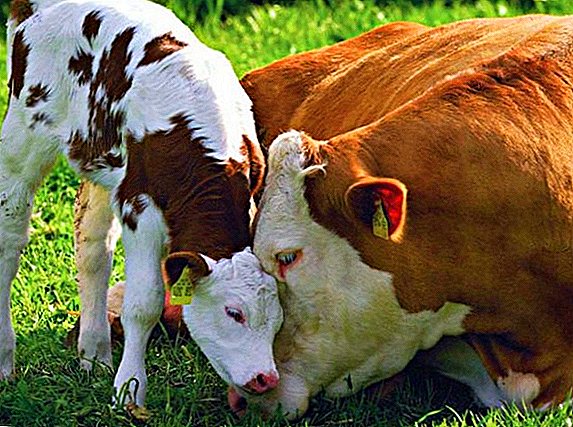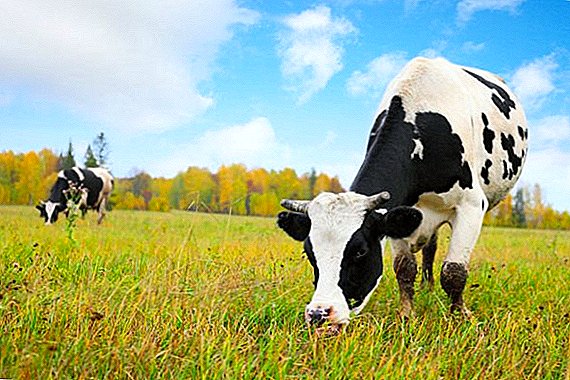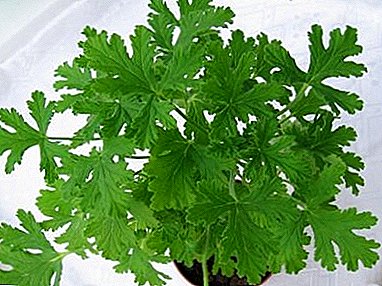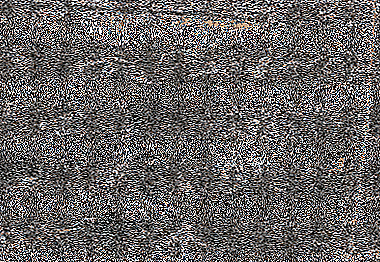
Breeding and rearing quails is a profitable and simple business. This bird is in great demand among farmers. And the reason for this is useful eggs.
In addition, these birds give tasty dietary meat. But very often due to non-compliance with the conditions for growing quails are sick. In this case, it is important to timely detect the disease and prevent massive infection.
Breeding characteristics
Adult quail feeding occurs 3 times a day.. On one individual leaves 30 g. The diet should contain a balanced feed for laying hens. It is necessary to add grain, greens, and fruits to food. In a separate feeder must be crushed shells, small, sand, boiled fish.
They contain quail in low cages. The floor must be mesh. This will reduce the risk of developing diseases. The air temperature in the room should be 22 degrees. In winter, it is not acceptable to lower it below 16 degrees. Sudden temperature fluctuations reduce egg production.
Quail diseases and their treatment
note! For these birds, the main concern remains the preservation of their health.
Generally quail resistant to infectious diseases. But in case of violation of the condition of their maintenance and feeding the birds can get sick.
 The main causes of quail diseases are:
The main causes of quail diseases are:
- mud;
- dampness;
- drafts.
Particular danger for quails are viral diseases. They are able to destroy the whole livestock. So it is important to quickly identify the disease and focus all efforts on treatment.
Injuries or bruises
Because of the rise or incorrectly set foot, the birds break the wing or limb. In this case, they become aggressive, and the wing or legs acquire an unnatural location.
The treatment of injuries or bruises includes the following plan of action:
- Isolation of a bird from other individuals on a poultry farm.
- In case of injury, carefully trim the feather around the wound with scissors.
- Treat the wound with a solution of potassium permanganate or Furacilin, if possible bandage the wing or limb.
- After 2-3 days, unwind the bandages and inspect the wound. If necessary, lubricate it with iodine.
- In case of a fracture, carefully straighten the ends of the bones, disinfect the skin near the damaged area. Put cotton wool and thin sticks splinter on broken bone. All carefully bandaged.
In violation of the diet
Poor shell formation
The reason for the development of diseases is the insufficient amount in the diet of mineral substances, vitamin D, calcium. During the illness, quails begin to lay eggs with a thin and soft shell or without it at all, and with a laminated film. Treatment of improper shell formation is reduced to an increase in the content of mineral components in the diet.. In the feed to add chalk and crushed shells.
Avitaminosis
 This disease is formed as a result of the lack of vitamins of groups A, B, C, D in the body of the bird. If there is not enough vitamin C, then quails lag behind in growth and development, their peritability is impaired.
This disease is formed as a result of the lack of vitamins of groups A, B, C, D in the body of the bird. If there is not enough vitamin C, then quails lag behind in growth and development, their peritability is impaired.
In adults, egg production decreases and the quality of the shell deteriorates.
Treatment of beriberi is reduced to adding to the diet of birds feed containing vitamins:
- fish and meat and bone meal;
- fodder yeast;
- green feed.
Oviduct prolapse with egg
This disease is formed due to improper nutrition or maintenance. It occurs if, when keeping birds of 30-45 days old, food is used for adults, intensive lighting is used, lasting 24 hours. Because of this, stimulation of early sexual development occurs, and early egg production begins.
Females of quail, which did not have time to develop physiologically, there are cases of prolapse of oviducts with the egg. The bird perishes from this. In adults, the disease results from a lack of vitamins A and D2 in the diet.
Eye problems
Conjunctivitis
This is the most common eye disease among quails. The main symptoms of conjunctivitis:
- discharge of mucus from the eyes;
- eyelid edema;
- stuck together feathers about eyes.
The following causes of conjunctivitis are distinguished.:
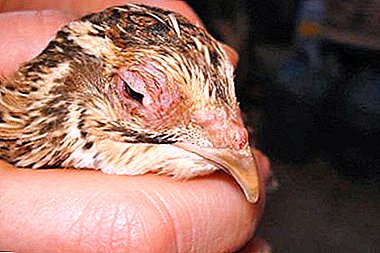 Dirt in the cells. The excrement accumulated on the floor releases ammonia, the fumes of which contribute to the development of respiratory diseases.
Dirt in the cells. The excrement accumulated on the floor releases ammonia, the fumes of which contribute to the development of respiratory diseases.- Infectious conjunctivitis causes a virus that is formed in the litter of birds with fly larvae deposited in it. You can enter the virus in grass feed and the remains of the litter of infected wild birds.
- Systematic lack of vitamin A in the diet of quail. If the feed is not balanced, the bird risks blindness.
Treatment of conjunctivitis is as follows:
- Ensuring cell cleanliness, balanced nutrition and no drafts.
- Rinse eyes with 3% boric acid solution.
- The infectious form of conjunctivitis is treated with broad-acting antibiotics (Levomycetin).
Lipogranuloma
This quail disease is formed with a lack of vitamin A and D. It can be recognized by the presence of small tumors on the eyelids. For treatment, it is enough to compensate for the lack of these vitamins in the feed of quails.
Xerophthalmia
The reason for the development - lack of vitamins in the diet of poultry. With xerophthalmia, the cornea of the eye dries out and thickens.
Panophthalmitis
Injury and viral infections can affect the development of the disease. Symptoms such as corneal clouding and eye lenses will help to recognize the disease. Used for the treatment of antibiotics (Ciproflokstsin).
Infectious processes
Pseudochuma
 This is an acute viral disease in which the bird instantly dies. The disease proceeds in a latent form. damage is inflicted on the respiratory, digestive and nervous systems.
This is an acute viral disease in which the bird instantly dies. The disease proceeds in a latent form. damage is inflicted on the respiratory, digestive and nervous systems.
The source of the pseudo-voices are:
- sick and recovered bird;
- infected litter;
- pen;
- egg.
The duration of the incubation period is 2-15 days. Symptomatology is different, taking into account the available form:
- Typical form. It is characterized by fever, paresis and paralysis. The bird is weak, the goiter expands, and there is a flow of fetid liquid from the mouth, diarrhea with blood.
- Atypical form. Defeats the young, for no characteristic symptoms.
In the chronic course of the disease pay attention to the croaking sounds. This symptom is peculiar to pseudo-pills. Treatment of the disease is not developed. Due to the high contagiousness, it is impractical to treat the infected individual. Replace livestock.
Pulloz
Do quails have salmonella? This possibility also exists, this infectious process defeats the young. Called Salmonella. Accompanying the defeat of the intestine, internal organs. Transmission of infection occurs through infected quail eggs - Salmonella carriers.
Pullose has the following symptoms.:
- birds stand with widely spaced limbs;
- closed eyes;
- hard breath;
- discharge of whitish mucous feces;
- about cloaca glued fluff;
- blockage of cloaca and cloacitis.
Attention! Overheating, overcooling of young animals and feeding with substandard food is unacceptable. All this increases susceptibility.
Pullose treatment is as follows.:
- Rejection of young stock.
- Hematological analysis of breeding livestock.
- Disinfect the room, incubator and eggs.
Aspergillosis
 It is an infectious disease of quails caused by the fungus aspergillus. In adult birds, it flows in a hidden form, There is the following symptoms of aspergillosis:
It is an infectious disease of quails caused by the fungus aspergillus. In adult birds, it flows in a hidden form, There is the following symptoms of aspergillosis:
- dyspnea;
- thirst;
- general weakness;
- cyanosis (blue) beak and legs.
Treatment of aspergillosis includes antibiotics, antifungals, and vitamin therapy.:
- Nystatin in a dose of 400 thousand units. per 1 kg of body weight for 7-10 days with food.
- Amphotericin B.
- 5-florocytosine.
- Mycoplasol.
- Intraconazole.
Colicbacteriosis
This is an intestinal infection, which, if left untreated, can develop into an epidemic. Infection occurs through water and feed. The main reason is unsanitary conditions. Symptoms identical to pulloz.
Preventive measures
To avoid the spread of infection, The following simple preventive measures must be observed.:
- Observe the density of individuals per 1 m2 (115 heads).
- Provide optimal light and temperature conditions.
- Timely clean up the cage.
- Disinfect the house regularly.
- Isolate from other domestic and wild animals.
- Follow the diet and provide the bird with a constant and clean drink.
- The composition of feed to enter the required amount of vitamin supplements.
- Use special clothes and shoes when visiting the house.
Conclusion
Quails, despite their high immunity, are subject to various diseases. Mostly they occur in violation of conditions of detention and nutrition. So the main task of each farmer is carefully and responsibly approaching the diet of quails and monitor the cleanliness of the house.
You can also learn about quail diseases in this video:


 Dirt in the cells. The excrement accumulated on the floor releases ammonia, the fumes of which contribute to the development of respiratory diseases.
Dirt in the cells. The excrement accumulated on the floor releases ammonia, the fumes of which contribute to the development of respiratory diseases.
